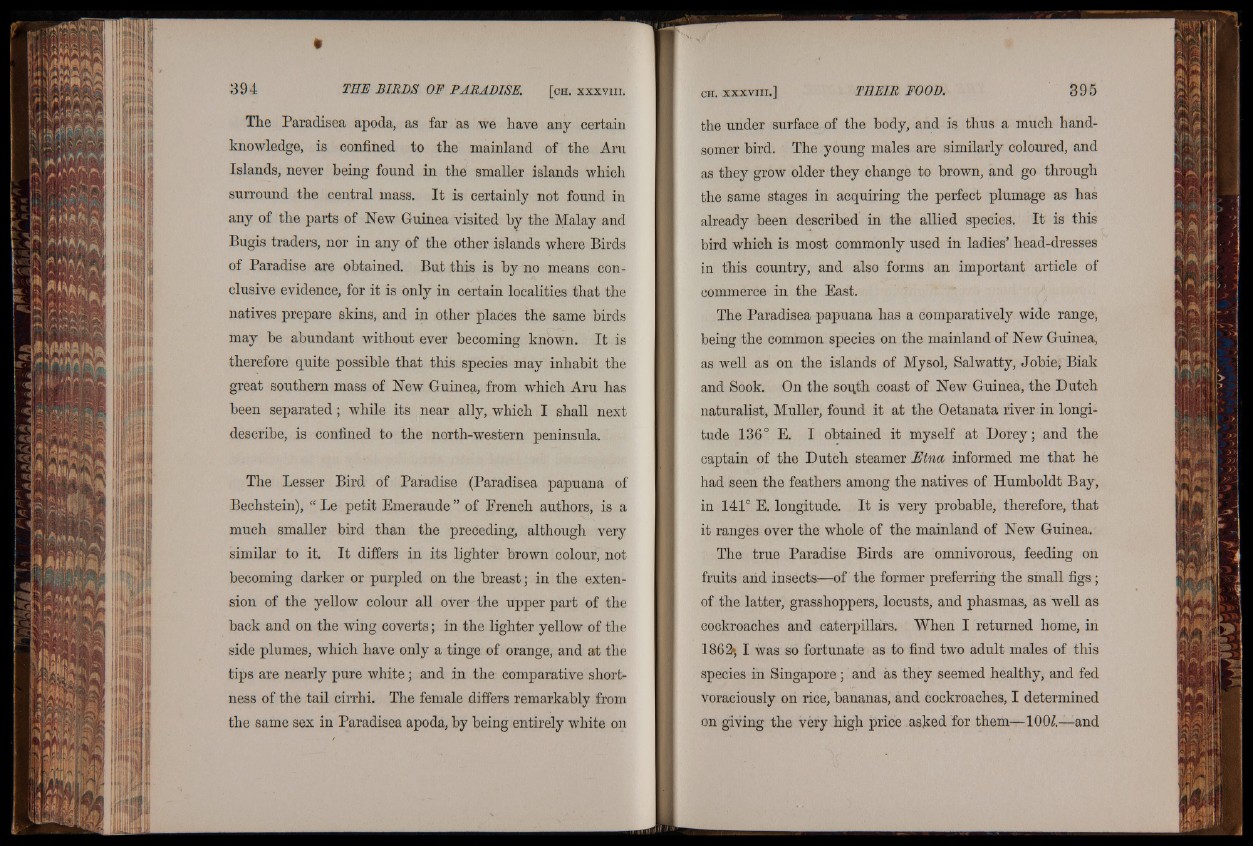
The Paradisea apoda, as far as we have any certain
knowledge, is confined to the mainland of the Aru
Islands, never being found in the smaller islands which
surround the central mass. I t is certainly not found in
any of the parts of Hew Guinea visited by the Malay and
Bugis traders, nor in any of the other islands where Birds
of Paradise are obtained. But this is by no means conclusive
evidence, for it is only in certain localities that the
natives prepare skins, and in other places the same birds
may be abundant without ever becoming known. It is
therefore quite possible that this species may inhabit the
great southern mass of Hew Guinea, from which Aru has
been separated; while its near ally, which I shall next
describe, is confined to the north-western peninsula.
The Lesser Bird of Paradise (Paradisea papuana of
Bechstein), “ Le petit Emeraude ” of French authors, is a
much smaller bird than the preceding, although very
similar to it. I t differs in its lighter brown colour, not
becoming darker or purpled on the breast; in the extension
of the yellow colour all over the upper part of the
back and on the wing coverts; in the lighter yellow of the
side plumes, which have only a tinge of orange, and at the
tips are nearly pure white; and in the comparative shortness
of the tail cirrhi. The female differs remarkably from
the same sex in Paradisea apoda, by being entirely white on
the under surface of the body, and is thus a much handsomer
bird. The young males are similarly coloured, and
as they grow older they change to brown, and go through
the same stages in acquiring the perfect plumage as has
already been described in the allied species. It is this
bird which is most commonly used in ladies’ head-dresses
in this country, and also forms an important article of
commerce in the East.
The Paradisea papuana has a comparatively wide range,
being the common species on the mainland of Hew Guinea,
as well as on the islands of My sol, Salwatty, Jobie, Biak
and Sook. On the south coast of Hew Guinea, the Dutch
naturalist, Muller, found it at the Oetanata river in longitude
136° E. I obtained it myself at Dorey; and the
captain of the Dutch steamer Etna informed me that he
had seen the feathers among the natives of Humboldt Bay,
in 141° E. longitude. I t is very probable, therefore, that
it ranges over the whole of the mainland of Hew Guinea.
The true Paradise Birds are omnivorous, feeding on
fruits and insects—of the former preferring the small figs;
of the latter, grasshoppers, locusts, and phasmas, as well as
cockroaches and caterpillars. When I returned home, in
1862* I was so fortunate as to find two adult males of this
species in Singapore; and as they seemed healthy, and fed
voraciously on rice, bananas, and cockroaches, I determined
on giving the very high price asked for them—1 0 0 £—and